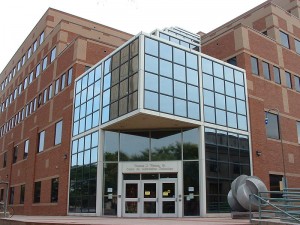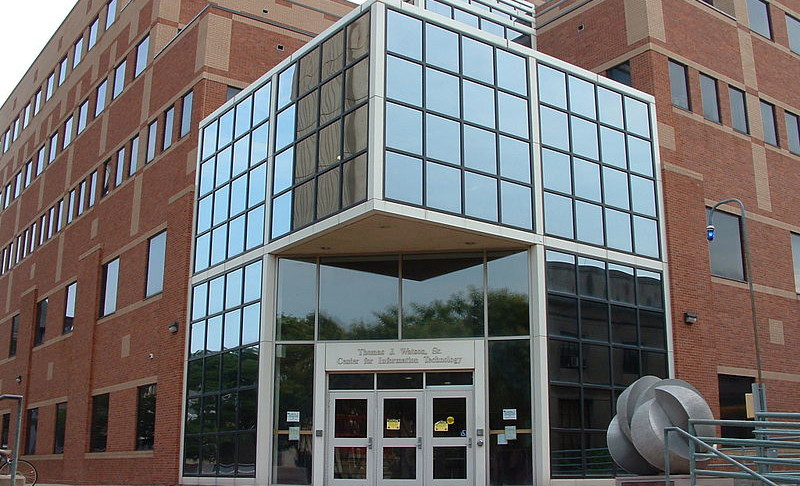A couple weeks ago, I mocked Twitter CEO Dick Costolo for citing a “supply-side problem” recruiting female employees (and, crucially, board members). Although clearly the supply of qualified women is greater than one, I admit that Costolo identifies a very real problem. There simply aren’t enough women pursuing computer science.
If we want women to be represented in Silicon Valley, we need to encourage them to prepare for those careers. Until we can eliminate the “supply-side problem,” the argument will be used to legitimize a lack of diversity. So how do we make it happen?
Starting with the girl in the mirror
I’m slightly embarrassed to admit that I’ve never taken a computer science class at Brown. When I was a freshman, I didn’t want to; it sounded a lot like sentencing myself to all-nighters in the CIT with the people who didn’t shower. By the time I was a sophomore, all the CS concentrators I knew were guys who fit the “brogrammer” stereotype perfectly. Sufficiently intimidated, I stopped checking the CS listings on Banner.
But in the meantime, I’ve realized that maybe I might like coding. I’ve taught myself a bit of HTML, a tiny bit of Javascript, and enough CSS to intelligently Google whatever basic thing it is that I’m trying to do. (Why? Because I wanted to learn how to make my blog look pretty). And next semester, I’m going to overcome my intimidation and take a class in the CS department. As a woman who tries to make a point of advocating for women in computer science, it seems counterproductive not to.
The easiest way to increase the number of women in technology is to become a woman in technology. I was pleasantly surprised to discover there are a number of programs out there for women interested in learning to code. For example, Hackbright is a 10-week full-time course in San Francisco that gives women with little computer science background the skills to, at the end of the program, apply for jobs at the likes of Facebook, Twitter, and Pinterest. It teaches many of the predominant web development languages, as well as providing mentorship and interview advice.
For those of us looking for something a little less intensive, online tools such as Codecademy and Coderacer are a fun way to spend a free hour or two.
The Brown community
In 2012, only 14% of Brown’s computer science graduates were women. While our school is known for its progressive stance on issues like nudity, we actually have fewer women in computer science than the national average. Ouch.

Luckily, there are programs at Brown dedicated to encouraging women to pursue the CS concentration. Julie Mond, a coordinator of Women in Computer Science at Brown (known as WiCS), explained that WiCS hopes to “navigate the CS department, choose courses, learn about research opportunities and internship options, and learn about the department’s TA program.” WiCS holds widely-attended events such as discussion panels and resume workshops, as well as social outings like ice skating in Kennedy Plaza.
The department appears to be deliberately reaching out to women as well, which (as they discovered at Harvard Business School) isn’t always easy. This year, the CS department’s diversity committee gave out four partial scholarships for women to attend the Grace Hopper Celebration of Women in Computing, a well-known conference honoring female computer engineers. (Companies like Microsoft, Yahoo!, and Adobe also sponsored Brown students at the conference).
Nonetheless, the predominant culture among Brown’s CS department isn’t spectacularly female-friendly. In a 2011 Brown Daily Herald article, a student recounted finding a handout for an assignment to be outright sexist.
“The prompt presented a hypothetical scenario, and while some students might have been amused, Condon found it “a little off-putting.”
A woman is upset because she cannot figure out the answer to a problem and her boyfriend is not around to help her. The prompt instructs the student to help.”
While this experience certainly isn’t the norm, perhaps it points to an underlying trend. And that trend continues far beyond our campus.
Changing the message
This week, the New York Times investigated the problem of female computer scientists in the media. A recent study by the Geena Davis Institute on Gender in Media revealed that in “family films,” the ratio of men to women in computer engineering roles was 14.5 to 1. It’s hard to encourage girls to pursue computer science when they have so few visible role models.
If you’re not convinced that media matters, consider this: The most commonly cited dream job for girls who apply to Girls Who Code, an intensive girls-only summer program in computer science, is a forensic scientist. Shows like CSI, Bones, and Law and Order: SVU all give scientific-minded girls someone to look up to, and it’s actually changed the demographics of the field.
If we could throw a few fictional female programmers into the zeitgeist, I bet we could shift the Dave-to-Girl ratio at least a little bit. I know I’d have been a lot more interested in AP Computer Science in high school if Cady Heron had met Aaron Samuels in a computer lab.
Of course, the problem of women in technology isn’t only on the supply side. As long as startups insist on hiring applicants who “fit” their “culture,” they will continue to perpetuate an echo-chamber of young, privileged men. But if women with computer science know-how become plentiful enough, and loud enough, eventually we’ll be impossible to ignore.
